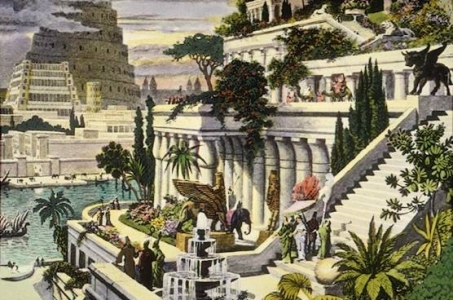Difference between revisions of "Great and Abominable Church"
m |
|||
| Line 1: | Line 1: | ||
| − | The [[Book of Mormon]] prophet Nephi experienced a vision in which he saw the formation of a “great and abominable church.” He discusses this topic in 1 Nephi | + | The [[Book of Mormon]] prophet Nephi experienced a vision in which he saw the formation of a “great and abominable church.” He discusses this topic in 1 Nephi 13–14 of the Book of Mormon, a book used by members of [http://comeuntochrist.org The Church of Jesus Christ of Latter-day Saints] as a companion book of scripture to the Bible. The church is also discussed in the Bible, in Revelation, particularly chapters 17 and 18, where it is called Babylon the great. |
| − | Many have speculated as to which church the scriptures refer to. However, | + | Many have speculated as to which church the scriptures refer to. However, leaders of the Church of Jesus Christ have clarified that no single church or organization meets all the requirements outlined in chapter thirteen of 1 Nephi. |
[[Image:Hanging_Gardens_of_Babylon.jpg|350px|thumb|alt=Satan's Church|right|Babylon is a symbol of Satan's church]] | [[Image:Hanging_Gardens_of_Babylon.jpg|350px|thumb|alt=Satan's Church|right|Babylon is a symbol of Satan's church]] | ||
Revision as of 16:21, 13 May 2020
The Book of Mormon prophet Nephi experienced a vision in which he saw the formation of a “great and abominable church.” He discusses this topic in 1 Nephi 13–14 of the Book of Mormon, a book used by members of The Church of Jesus Christ of Latter-day Saints as a companion book of scripture to the Bible. The church is also discussed in the Bible, in Revelation, particularly chapters 17 and 18, where it is called Babylon the great. Many have speculated as to which church the scriptures refer to. However, leaders of the Church of Jesus Christ have clarified that no single church or organization meets all the requirements outlined in chapter thirteen of 1 Nephi.
- The titles "church of the devil" and "great and abominable church" are used to identify all … organizations of whatever name or nature—whether political, philosophical, educational, economic, social, fraternal, civic, or religious—which are designed to take men on a course that leads away from God and his laws and thus from salvation in the kingdom of God (Elder Bruce R. McConkie, Mormon Doctrine, 2nd ed. [1966], 137–38)
Author and professor Stephen E. Robinson outlines what conditions would have to apply for the term to refer to a specific religion:
- It must have formed among the Gentiles.
- It must have edited and controlled the distribution of the scriptures.
- It must have slain the Saints of God, including the Apostles and prophets.
- It must be in league with civil governments and use their police power to enforce its religious views.
- It must have dominion over all the earth; it must pursue great wealth and sexual immorality; and it must last until close to the end of the world (Stephen E. Robinson, “Warring against the Saints of God,” Ensign, Jan. 1988, 38–39).
Since no existing church has done all of this (and the last can’t be verified until the end of the world is near), it is clear the scriptures are not referring to a specific religion. Chapter 14 says that there are only two churches—God’s church and Satan’s church. This is not a denominational reference, but rather refers to the intent of the organization, whether it is a church or other type of organization.
However, chapter 13 in 1 Nephi does appear to refer to a specific church. The Doctrine and Covenants, a book of modern revelations for The Church of Jesus Christ of Latter-day Saints, whose members are often called Mormons, states that this church operated after the apostles had fallen asleep, meaning that the church no longer operated under apostolic authority. (See Doctrine and Covenants 86:1-3.)
According to Robinson:
- Such an agent would have had its origins in the second half of the first century and would have done much of its work by the middle of the second century.
- This period might be called the blind spot in Christian history, for it is here that the fewest primary historical sources have been preserved. We have good sources for New Testament Christianity; then the lights go out, so to speak, and we hear the muffled sounds of a great struggle. When the lights come on again a hundred or so years later, we find that someone has rearranged all the furniture and Christianity has become something very different from what it was in the beginning. That different entity can accurately be described as hellenized Christianity.
Again, however, we do not know which church is described by Nephi and John for this time period and it likely no longer exists.
Mormons are taught to watch for those aspects of the world that lead them away from God and to focus their attention and support on those things that further God’s plan and help them to stay close to Jesus Christ.
